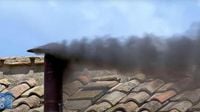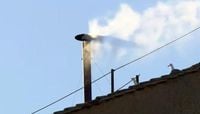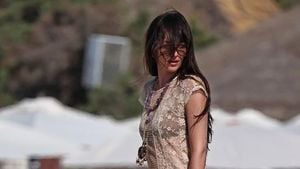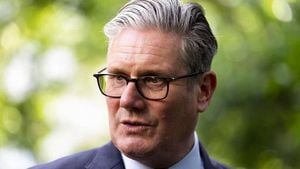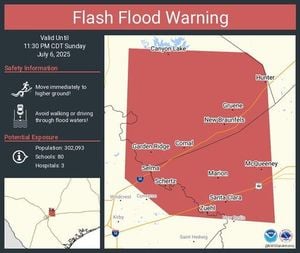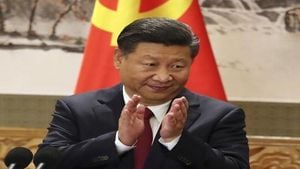On Thursday, May 8, 2025, the second day of the Conclave took place in the Sistine Chapel, where cardinals gathered to elect the new Pope. The day began with a morning mass, followed by the recitation of the Lodi at 9:00 AM. Voting was scheduled at 10:30 AM, noon, 5:30 PM, and shortly after 7:00 PM. However, the second smoke signal, or 'fumata', was black at 11:51 AM, indicating that no consensus had been reached among the 133 cardinal electors.
The black smoke, produced by a mix of chemicals, was a clear sign of another unsuccessful attempt to elect the successor to Pope Francis. This was the second black 'fumata' since the Conclave commenced the previous day. Cardinal Giovanni Battista Re, speaking on the significance of the moment, emphasized the world’s expectations for the new Pope, particularly in light of ongoing global conflicts.
"The world is troubled by the war in Ukraine and Gaza, and there is a pressing need for a Pope who can inspire peace and faith," Cardinal Re said, reflecting the sentiments shared by many attending the Conclave.
As the cardinals prepared for the day’s voting, they were reminded of the complex process outlined in the Apostolic Constitution Universi Dominici Gregis, which governs the election of a new Pope. The required quorum for election is 89 votes, which is two-thirds of the total electors. If a consensus is not achieved after 33 or 34 votes, a runoff will occur between the two candidates who received the highest number of votes in the last round.
After the morning's unsuccessful votes, the cardinals took a break for lunch at Santa Marta, where discussions continued among them. They returned to the Vatican Palace in the afternoon for the third round of voting. If successful, a white 'fumata' would signal the election around 5:30 PM; otherwise, the final vote of the day was set for 7:00 PM.
As the day progressed, anticipation grew among the faithful waiting in St. Peter's Square. Approximately 15,000 people had gathered, eager to witness the moment the new Pope would be announced. Their hopes were buoyed by the possibility of a white 'fumata' later in the day.
The first vote of the day had already shown that the cardinals were still divided, with the second vote failing to reach the necessary quorum. The third vote was expected to be more decisive, as many speculated that it could lead to the election of the new Pope.
Among the potential candidates were prominent figures such as Cardinal Pietro Parolin, the Vatican's Secretary of State, and Cardinal Luis Antonio Tagle of the Philippines, who had recently gained popularity as a reformist voice within the Church. However, as the day unfolded, the dynamics among the cardinals continued to shift, reflecting the complexities of their deliberations.
In a surprising turn, the third vote did not yield any results, leading to another black 'fumata' at 5:30 PM. This disappointment meant that the final vote of the day would still be necessary, with all eyes on the Sistine Chapel as the cardinals resumed their deliberations.
As the sun began to set, the atmosphere in St. Peter's Square was electric, with spectators eagerly awaiting news. The final vote was set for around 7:00 PM, and many hoped that this would finally bring clarity to the Conclave.
After a long day filled with anticipation and uncertainty, the moment finally arrived. At 6:07 PM, the white 'fumata' emerged from the chimney of the Sistine Chapel, signaling that a new Pope had been elected. The bells of St. Peter's Basilica rang out joyously, confirming the news to the thousands gathered below.
Cardinal Dominique Mamberti, the protodeacon, was expected to announce the name of the new Pope from the Loggia of the Blessings. This moment, steeped in tradition and history, marked the culmination of intense deliberations among the cardinals, who had worked diligently to find a successor to Pope Francis.
As the crowd erupted in cheers and applause, the significance of the moment was not lost on anyone present. The election of the new Pope was not just a pivotal event for the Catholic Church but also a moment of hope for millions around the world seeking guidance and spiritual leadership.
In the days leading up to the Conclave, discussions had focused on the challenges facing the Church, including the need for a leader who could address pressing global issues. Cardinal Re’s earlier remarks about the need for peace resonated deeply, as many believed the new Pope would need to be a unifying figure amid ongoing conflicts.
As the new Pope prepared to appear before the faithful, the world held its breath in anticipation. The election was not just a change in leadership but a pivotal moment for the future direction of the Catholic Church and its role in addressing the challenges of modern society.
This Conclave, marked by its intense deliberations and the weight of expectation, will be remembered as a significant chapter in the history of the papacy. The new Pope's vision and leadership will undoubtedly shape the Church's response to the myriad challenges it faces in the coming years.
